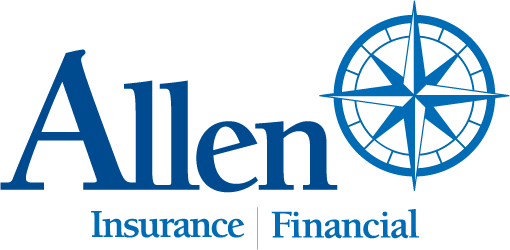Fixed income investments (also known as bond investments) play an important role in a well-diversified portfolio, potentially serving as downside protection in times of uncertainty. Still, as of this writing in January 2022, some fixed income investors are understandably cautious about the risk of rising consumer prices on their portfolios. The primary concern is the potential for interest rates to increase.
Rising interest rates put pressure on fixed income investments by causing prices for existing bonds to fall. This is known as interest rate risk. Although there is no way to completely avoid the impact of higher inflation on fixed income, the risk can be mitigated. Let’s review four strategies that could help manage fixed income portfolio risk.
1) Reduce Interest Rate Risk
Why is interest rate risk a primary concern for many bond investors? After all, a bond’s original terms do not change within the interest rate environment. If you hold a bond to maturity, you’re entitled to receive the full principal amount, plus any outstanding accrued interest.
If you want to sell a bond before maturity, however, the situation is different. Prior to maturity, most existing bonds sell at a premium or a discount to the full principal amount, plus accrued interest. If interest rates have risen since a bond was issued, the price of the bond typically declines.
So, what strategies can we employ to potentially reduce the interest rate risk of a bond portfolio? Adjusting the duration of your bond portfolio is one of the first methods to consider. Duration is a measure of the sensitivity of the price of a bond to a change in interest rates. Notably, duration is not the same thing as a bond’s term to maturity.
For instance, a bond with a duration of 5 would be expected to see its price fall 5 percent if interest rates were to rise by 1 percent. In comparison, a bond with a duration of 2 would be expected to see a 2 percent decline if interest rates were to rise by 1 percent.
To guard against a rise in rates, it might help shorten the duration of your bond portfolio. It’s important to note, though, that shortening duration alone may not ensure that a portfolio is adequately protected while generating a reasonable return.
2) Increase Credit Spread Risk
A credit spread is the difference in interest rates between a U.S. Treasury bond and another type of bond of the same maturity but different credit quality. Typically, bonds with a lower credit quality offer higher interest rates than U.S. Treasury bonds. The risk for investors is that a bond with a lower credit quality comes with a higher risk of default. Default means a bond has missed an interest or principal payment.
So, how does this strategy work? Most importantly, investors must consider whether the potential benefit of receiving a higher interest rate is worth the higher risk of default. If this strategy is implemented, the fixed-income portion of a portfolio is oriented away from U.S. Treasury bonds and toward investments that increase credit spread risk. This category includes corporate bonds, mortgages, and high-yield investments. High-yield investments have lower credit ratings than investment-grade corporate bonds, although they typically offer higher yields.
These investments are a step out on the risk spectrum, but the risk is concentrated on credit spread risk. Corporate bonds, mortgages, and high-yield investments are typically driven by improving economic fundamentals. As a result, they could benefit from rising rate environments that see faster economic growth. Given the reasons for the recent inflation increase—namely reopening efforts and economic recovery—spread-oriented investments may make sense for some investors.
It’s important to note that corporate bonds, mortgages, and high-yield investments are not immune to the negative effect rising interest rates may have on prices. Nonetheless, the move from primarily interest rate-sensitive to spread-oriented investments could help lower the interest rate risk of a fixed income allocation. These investments could potentially provide a reasonable yield by shifting the risk exposure toward credit.
3) Consider Foreign Exposure
It might also be beneficial to shift a portion of your fixed income allocation to international bonds. Several factors can affect global interest rates, but the economic fundamentals for individual countries primarily drive their respective rates. Given the diverging global economic recovery, tactical opportunities may arise in developed and emerging international markets.
Including international bonds diversifies a bond portfolio away from U.S.-based interest rate risk. Accordingly, this strategy could help dampen price volatility for a fixed income allocation when interest rates are rising.
As with spread-oriented investments, this strategy involves some interest rate risk. Still, diversifying exposure to include foreign interest rate risk may help lower a portfolio’s overall volatility.
4) Employ Yield Curve Positioning
Another strategy to consider is focusing on holding a diversified portfolio of fixed income investments spread across the yield curve. What is the yield curve? A yield curve is a line that plots the interest rates (also known as the yield) of bonds having equal credit quality but different terms to maturity.
When analysts consider interest rate risk, most hypothetical scenarios envision an environment where rates shift in parallel across the yield curve. In reality, however, this scenario rarely happens.
The interest rates for bonds usually depend on whether it’s a short-term or long-term bond. Short-term bonds are generally more sensitive to changes in the Federal Reserve’s monetary policy. On the other hand, interest rates for a long-term bond are driven more by the outlook for long-term economic growth. Given this fact, holding a bond portfolio with a diversified range of maturity dates could help protect against changes in monetary policy that increase interest rates.
Bond laddering is a strategy that can help diversify interest rate risk exposure across the yield curve. Instead of buying bonds that are scheduled to come due during the same year, purchasing bonds that mature at staggered future dates should be considered. This can allow for more regular reinvestment of income and helps insulate a portfolio against yield changes in a certain segment of the market.
Need Additional Information?
For assistance in evaluating your options, please contact me. We’ll talk through these strategies for managing the potential outcomes and risk of your fixed income portfolio.
Bonds are subject to availability and market conditions; some have call features that may affect income. Bond prices and yields are inversely related: when the price goes up, the yield goes down, and vice versa. Market risk is a consideration if sold or redeemed prior to maturity.
A bond ladder, depending on the types and amount of securities within the ladder, may not ensure adequate diversification of your investment portfolio. While diversification does not ensure a profit or guarantee against loss, a lack of diversification may result in heightened volatility of the value of your investment portfolio.
The main risks of international investing are currency fluctuations, differences in accounting methods; foreign taxation; economic, political or financial instability; lack of timely or reliable information; or unfavorable political or legal developments.
This material is intended for informational/educational purposes only and should not be construed as investment advice, a solicitation, or a recommendation to buy or sell any security or investment product. Investments are subject to risk, including the loss of principal. Some investments are not suitable for all investors, and there is no guarantee that any investing goal will be met. Past performance is no guarantee of future results. Please contact your financial professional for more information specific to your situation.





